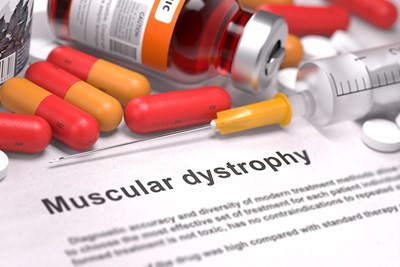Muscular dystrophy is a group of diseases that develop as the result of a genetic mutation and cause progressive muscle weakness and deterioration. There are over 30 different types of muscular dystrophy that have varying symptoms, but the most common symptoms of this disease include problems with walking and coordination, experiencing muscle pain and stiffness, and trouble running or jumping.
When to See the Doctor
If you start to notice any of the signs of muscle weakness in either yourself or your child, you should seek medical advice as soon as possible. The first signs usually include increased falling and general clumsiness. If your doctor thinks you or your child might be affected by a form of muscular dystrophy, he or she will likely refer you to a specialized doctor who is in an expert in the diagnosis and treatment of this specific disease.
Preparing for the Appointment
Before the appointment, there are some things you can do to make sure you are adequately prepared. These include:
- Make sure to write down all of the symptoms that you or your child have been experiencing, and try to remember how long they have been going on.
- Make a list of all medications, including vitamins and supplements, that you or your child have been taking recently.
- Check to see if there is any family history of muscular dystrophy.
- Write down any other key medical information, including other conditions you or your child may have.
- Bring any photos or videos that can show your doctor the concerns you are having.
Diagnostic Tests
During the appointment, your doctor is likely to start with a simple physical examination and discussion of your medical history. If this initial exam gives your doctor cause for concern, he or she will likely recommend some additional testing. This may include:
- Enzyme tests: When muscles are damaged, they release a specific kind of enzyme called creatine kinase into your blood stream. An easy way for your doctor to see if you have a muscle disease such as muscular dystrophy is to simply take your blood and check to see if the levels of this enzyme are unusually high.
- Electromyography: This is a test to check for changes in the pattern of electrical activity inside your muscles that may suggest a muscle disease. This test involves inserting an electrode needle into your muscle where electrical activity can be measured while you tighten and relax your muscles.
- Genetic testing: Blood samples can also show your doctor if you carry any of the genetic mutations that cause certain types of muscular dystrophy.
- Muscle biopsy: If needed to confirm the diagnosis, a small piece of muscle can be removed using an incision or a hollow needle. Analyzing the tissue sample will help to determine if the muscle disease is muscular dystrophy instead of something else.
- Heart-monitoring tests: Certain types of muscular dystrophy can also cause damage to your heart muscle. Tests such as electrocardiography and echocardiograms can help to check the level of functioning in your heart.
- Lung-monitoring tests: Muscular dystrophy can also affect the muscles in your lungs and cause problems with your breathing. Lung-monitoring tests help to check your lung function.



